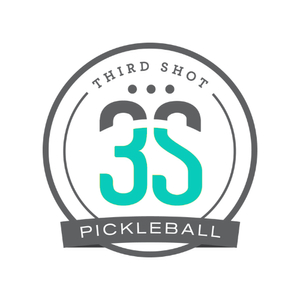This week marks International Women's Day and it's a great opportunity to identify areas in pickleball where we need to continue to work to elevate women, as well as to acknowledge where good work has already been done.
In the pickleball clinics that I teach, I’d estimate 60% of the participants are women. Our newsletter, Inside Pickleball, has a roughly even distribution of men and women. However, on the coaching side of things at Pickleball Coaching International we estimate that just 27% of our members are women.
Coach Nay Pinkerton is a well-know pickleball instructor and player outside of Brisbane, Australia.
It's important to encourage women who want to become coaches — but what does that look like, and what needs to change? Are there structural issues that make a coaching certification program more or less attractive to women? I recently spoke to a colleague who is one of the most expert coaches I have ever met, and she shared her insight on the relatively low numbers of women in advanced coaching programs:
"It's funny. Typically, men join something when they want to feel included. Women join something once they feel included. So, if we want more women in these advanced coaching programs, we have to actively engage with them and make them feel like they are already part of this community – that they already belong."
Lauren McLaughlin was a regular providing courtside interviews for the APP.
Broadcasting is another area to look at and one where we're seeing progress. Although I haven't done much broadcasting lately, I enjoy being in the booth, watching the behind-the-scenes action and sharing the experience with viewers. I'm glad to see more women taking center stage on camera and behind the microphones. For example, Hannah Johns has done a good job with on-court interviews at the PPA, and Liv Borski has taken over that role recently. Lauren McLaughlin has contributed a lot to the APP tour, although her hot takes have sometimes landed her in hot water. There are many women whom I've enjoyed having in the broadcast booth in the past. Irina Tereschenko has unparalleled insight and a direct way of communicating with the audience. Anna-Leigh Waters shocked me with how comfortable she was behind the mic at just 15 years old. Michelle Esquivel is always a pleasure in the booth, and my long-time friend and colleague Melissa McCurley has an incredible reservoir of information at her fingertips.
However, in my experience few women tend to be involved in the production side of live pickleball events. An exception is Meredith Howes from Pickleball Channel, who regularly keeps things on track and looking professional. That said, I can count on one hand how many times I've seen women fill really important roles behind the scenes on broadcasts.
While not in front of the camera much, Meredith Howes holds court when it comes to producing first class content for Pickleball Channel.
Tournament draws, especially for singles events, are an area where we need to see more balance. For instance, at a recent PPA event in Utah, 27 men entered the pro singles event which had to have pool play, eventually feeding into playoff rounds. On the women's side, there were just six players. At a recent APP event in Texas, there were 21 women signed up for singles, compared to 50 men. The same event had 54 men playing open doubles, but only 22 women in the same category.
I'm not suggesting that anyone should be forced to play in an event they don't want to. However, we need to think about how we can get more women playing in the events. As pickleball continues to grow, it's important for people in leadership roles, whether as a coach, broadcaster, organizer, or player, to consider their place in the sport and what they are doing to make it welcoming for everyone.
Written by Mark Renneson. Have a thought? send a voice memo or email to mark@thirdshotsports.com





